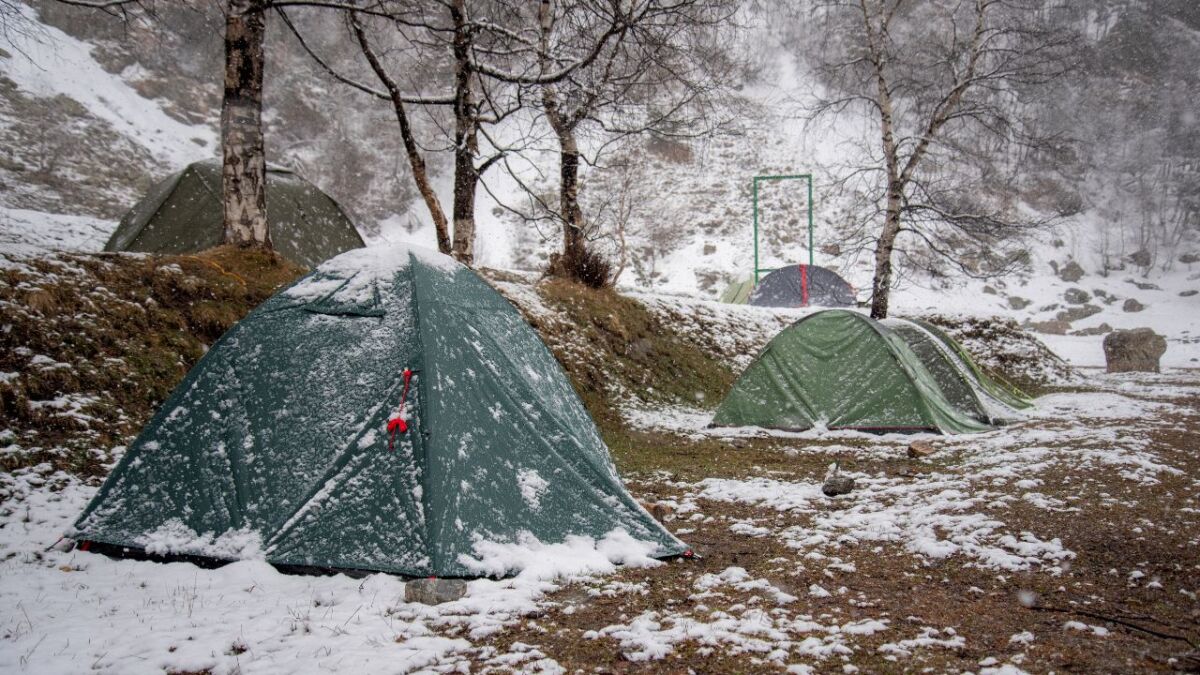
Camping in a winter storm: these 11 tips help you to stay safe
👉 The key facts from this guide
- Get informed about your destination and the weather conditions
- Don't go alone or inform family members about your location
- Dress in layers and protect yourself from gusts of wind
- Stay dry and equip yourself appropriately
- Use natural resources for cold protection and avoid deep valleys
- Don't forget to eat, drink and ensure sufficient insulation
Camping in the depths of winter can be an impressive experience, especially in areas where there are stunning snows capes to admire.
What initially sounds like a beautiful adventure can quickly turn into a precarious situation.
Although it is rather unlikely to encounter a severe winter storm, also known as a blizzard, here in this country, your safety should always be your top priority when camping.
That's why I have prepared 11 tips to help you stay safe even in the depths of winter and during an approaching winter storm.
Summary: With these tips, you are well-prepared for a winter storm
- Inform yourself about your destination
- Don't go alone (or inform relatives)
- The onion principle
- Protect yourself from icy gusts of wind
- Stay dry
- Equip yourself appropriately
- Provide warmth options
- Use natural resources for cold protection
- Avoid deep valleys (in general)
- Don't forget to eat and drink
- Isolation, isolation, and isolation again
I will discuss the following tips and advice in more detail in the following article.
However, keep in mind that no tip or advice in the world can replace your awareness of your environment and the gift of correctly assessing situations.
In the best case, you take as much responsibility as possible to avoid getting into such situations in the first place.
And now I wish you a lot of fun reading.
1. Inform yourself about your destination
The more information you can gather about your target area, the better.
Nothing, but really nothing can prepare you better for all eventualities on your camping adventure than obtaining information in advance.
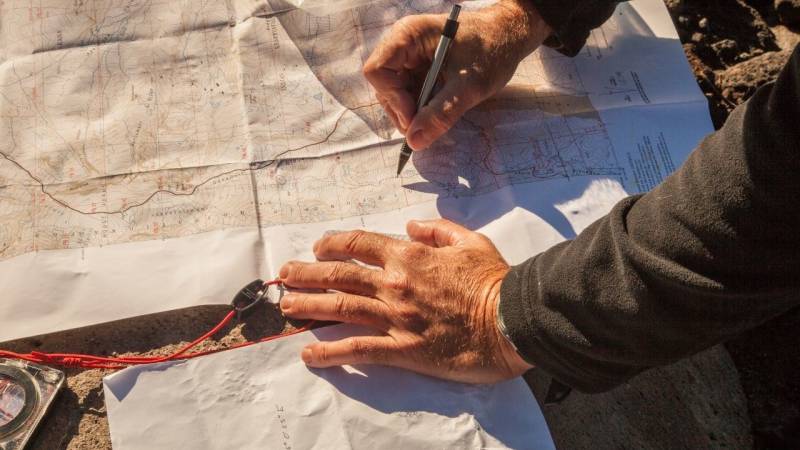
But what exactly does that mean, what information do you need, and what can you do with it?
At the beginning, you should check the local weather conditions of the past days and weeks.
In plain text, this means: If you know that you are planning a trip to the deepest wilderness in winter in two weeks, then regularly check the local weather for the next two weeks: have there been frequent storms recently? What temperatures prevail there during the day and at night?
Are there storms or special weather events near your desired location?
The more you know about the weather and its conditions there, the better you can prepare or find an alternative destination.
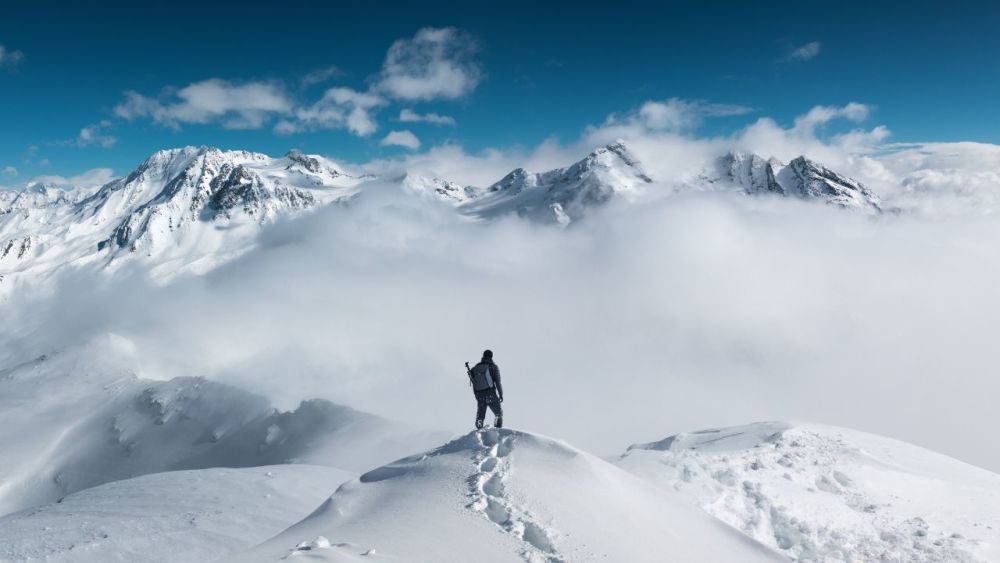
If there have been regular storms in this area recently, another storm cannot be ruled out.
Furthermore, you should have at least some knowledge of the respective terrain.
Where is civilization located, and how far are you from it? Would it be possible to seek shelter if you are camping in a tent? Is there even a risk of avalanches if heavy snow continues to fall in blizzard conditions?
Every piece of information you can gather about your planned destination helps you assess risks sensibly. This way, you can calculate risks and prepare for them.
A camping adventure can bring incredible fun, but it also comes with responsibility. So please keep in mind that during your preparation phase.
2. Don't go alone (or inform relatives)
Yes, I know: The solitude, tranquility, and serenity of the wilderness have their charm, and there is probably nothing more relaxing than being in complete peace in nature.
Away from civilization, you can rely on your primal instincts and reconnect with nature.
Your intentions are honorable, but in the depths of winter, you should reconsider.
I would rather not discourage you, but rather appeal to your reason emphatically.
If you really intend to venture far beyond the reach of civilization on a camping adventure, then you should not go alone.
If you don't have a partner for your trip, at least inform your relatives about your exact location, if necessary via GPS.
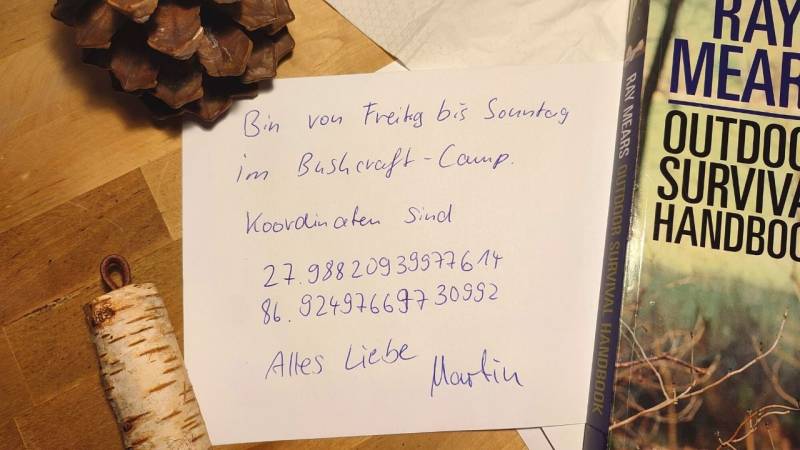
In snowy winter landscapes, as beautiful as they may be, it can be difficult to help you in an emergency. This is especially true during a winter storm!
Unpleasant plain text: In the worst case, you simply disappear and will only be found when the snow begins to melt - and that can take a while.
So make sure that someone knows where you are.
Otherwise, do not stray too far from the nearest point of contact or the nearest mountain rescue if you are in the mountains.
3. The Onion Principle
No, the onion principle has absolutely nothing to do with your diet, but actually with your clothing.
The greatest risk of a winter storm or blizzard is its relentless cold. It eats into your bones faster than hydrochloric acid and takes away almost every possibility of movement over time.
The best protection you can have against the biting cold is appropriate clothing that is layered according to the onion principle.
As you know, an onion has multiple layers - that's precisely what you should learn from!
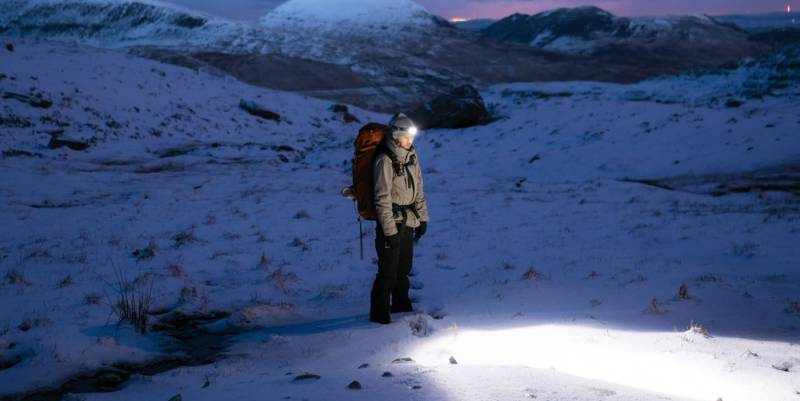
Don't just wear one layer of clothing, but several that protect you from wind and cold, especially in a strong winter storm.
The first, i.e., bottom layer should fit snugly and help your body retain heat instead of releasing it outward.
Long (thermal) underwear is ideal for this purpose. But also follow this principle with your socks and make sure that as many parts of your body as possible, including the extremities, are covered.
The second layer is also intended to serve as a form of insulation, but its main purpose is to protect you from the wind and prevent any liquids from penetrating.
So here, sweaters, (waterproof) winter jackets, scarves, hats, and other clothing items are particularly suitable. Try to cover as many parts of your body as possible here as well.
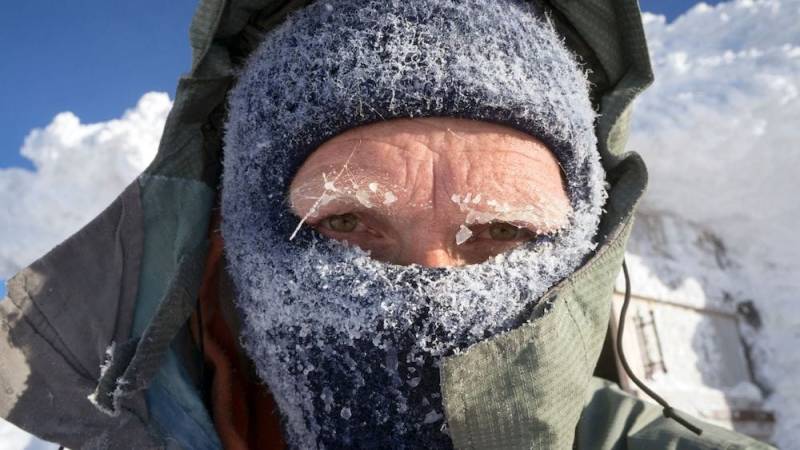
Do not neglect the protection of your face during a winter storm.
What may sound funny has become a bitter reality for many survivors of a winter storm: Your nose tip freezes off easier than you might think.
So also cover these areas with scarves, balaclavas or similar clothing items, depending on the severity of the storm.
Also read
The Ultimate Guide: What Clothing to Wear for Survival Training and Bushcrafting? - The right clothing can make the difference between life and death in survival situations. In this guide, we discuss what you should wear outdoors.
4. Protect yourself from icy gusts of wind
Icy gusts of wind are your absolute nemesis in a blizzard, which is why you should always protect yourself from them.
By that I don't just mean, as mentioned earlier, a protective layer of clothing, but also your tent or sleeping area, wherever that may be.
It won't help you if you have discovered a small cave to stay overnight in, but gusts of wind still penetrate, quickly chilling you.
Seal your sleeping area as best you can against incoming wind to stay as warm as possible.
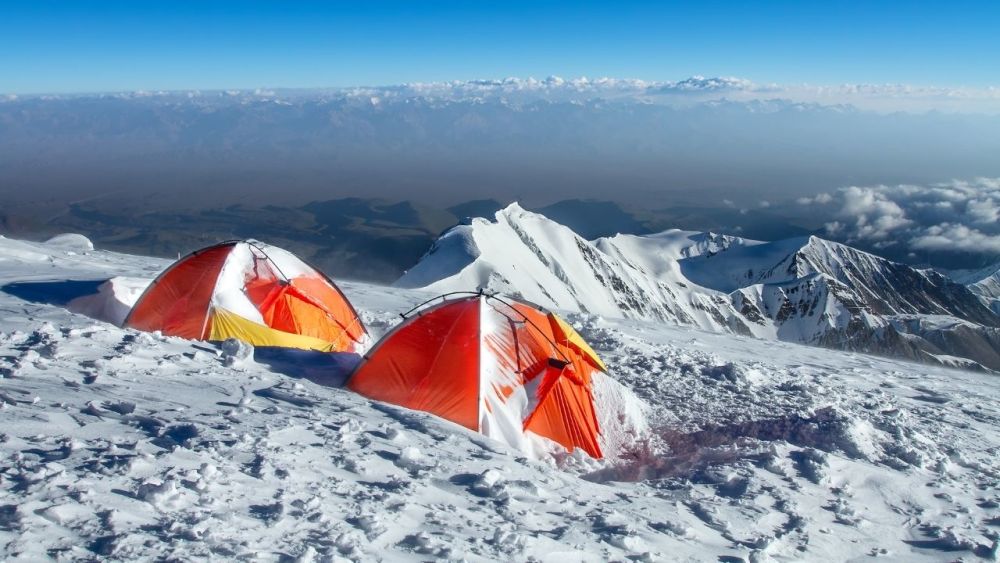
5. Stay dry
Another point that can be your downfall in a winter storm is moisture.
That applies to both your clothing and your accommodation. So, constantly try to make the outer layer of clothing as waterproof as possible to prevent cold water from penetrating your body.
Furthermore, always carry a dry set of clothes with you. If you happen to get really wet and cannot avoid it, you must be able to quickly get rid of the wet clothes.
If you are wet, slip into a dry set of clothes before you suffer from cold damage.
To stay as dry as possible, stay away from deep snow or mud if possible. Otherwise, reduce the time spent in it so that you don't come into contact with it for too long.
As you can imagine, this is often extremely difficult in a winter storm. If unavoidable, however, the rule still applies: get out as quickly as possible!
6. Equip yourself appropriately
That you should properly equip yourself for a camping trip is probably self-explanatory to you.
But it can't hurt to have a few weather-appropriate equipment items with you to go on your "winter vacation" a little easier.
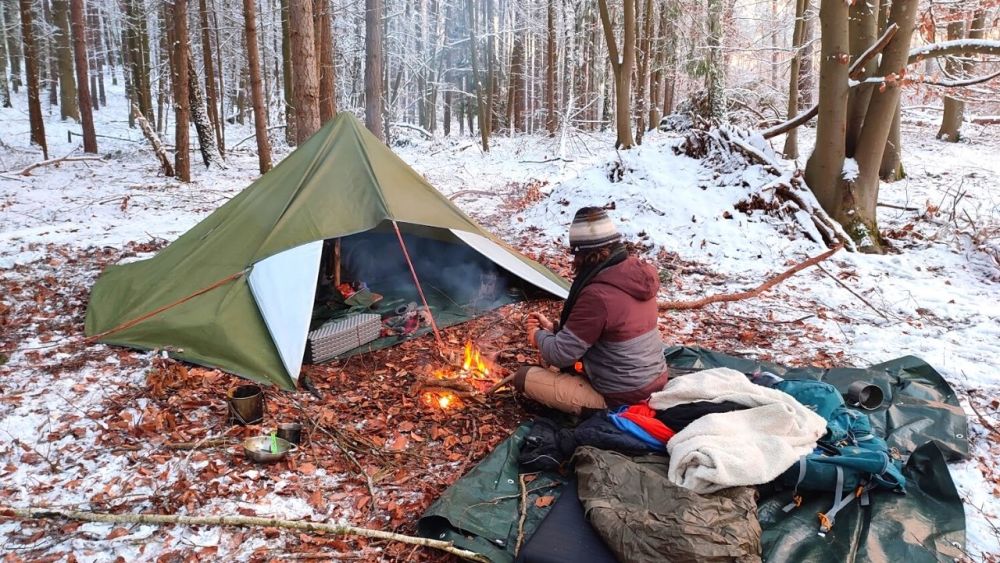
This includes, among other things, equipment such as:
- An extra thick and warming sleeping bag (check out the best list here)
- Additional clothing (layering principle)
- Gloves, hat, scarf, underwear, winter boots, etc.
- Lighter / matches / Firesteel (find the best Firesteel here)
- Camping grill / camping stove (Which type of camping stove suits you?)
- First aid kit (find my set here)
- Camping lantern (find the best ones here)
- Flashlight / headlamp
- Whistle / signal flares
- Mobile phone with power station (my best powerbanks)
- Insulated sleeping pad with high R-value (find the best list here and read here what the R-value means)
- A winter tent (read my guide here)
There are, of course, numerous other items that are perfect for a winter camping trip.
You see that the equipment you bring with you can either provide warmth, help you in emergencies, or create a signaling effect.
In addition to your standard equipment, the focus in a winter landscape should be on these factors.
Also read
Sleeping outside in winter - with these proven tips it will definitely work - Many outdoor enthusiasts shy away from the cold of a winter night. But with the right equipment and tips, you can handle sub-zero temperatures.
7. Provide heating options
If you were wondering in the previous section why you should bring a camping grill or oven, you will now get your answer.
You probably won't always have time to prepare something delicious, but this item is capable of keeping you warm when push comes to shove.
Furthermore, a few hand warmers, with which you cuddle up in the sleeping bag, can already make a big difference.
If nothing else works, resort to matches / tea lights / candles or lighters. Even though these are relatively small flames, the heat should be enough to keep you from freezing.
Here, similarities with previous points also arise: All measures that provide warmth will not help you if you cannot manage to keep the wind out of your accommodation.
So do what is necessary to produce heat and keep it in your accommodation as much as possible.
To keep your body warm, you can, of course, also use the classic: exercise.
One can hardly believe it, but a bit of physical activity can work wonders. You don't have to achieve top performance, but through a little movement, your body produces heat that stays in your shelter, provided you have sealed it properly.
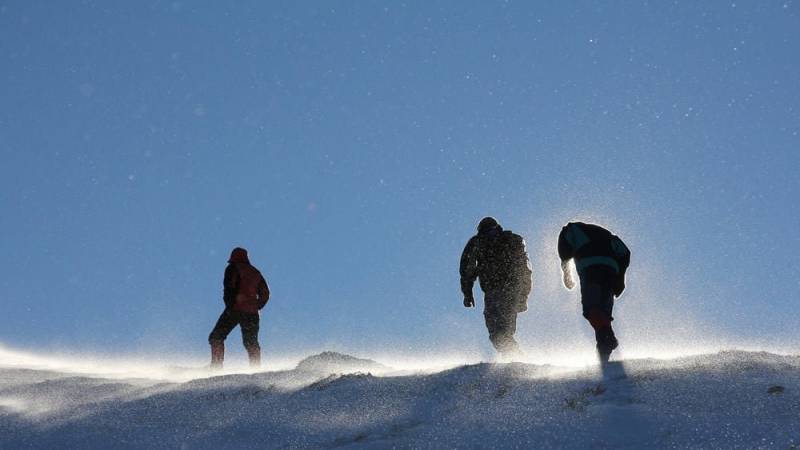
A small reminder and warning, however, I must express: No matter how you generate heat, be careful and prioritize your safety.
That applies especially in flammable tents or enclosed indoor spaces when you're experimenting with gas. All the heat won't do you any good if your tent is burned, or you're suffocated by toxic gases.
Read also
Can camping stoves be used indoors? - Camping stoves are usually designed for outdoor use, but some models can be used indoors with precautions.
8. Use natural resources for cold protection
With this point, it is not meant that you should go out and skin a bear, a wolf, or any other wild animal to use its fur as a warm coat (respect if you still manage to do it).
Here I address the wind once again. Because you can do more than just properly shield your tent.
Use your surroundings and look for dense forests, rocks, caves, and hills that already provide you with protection from icy winds without much effort.
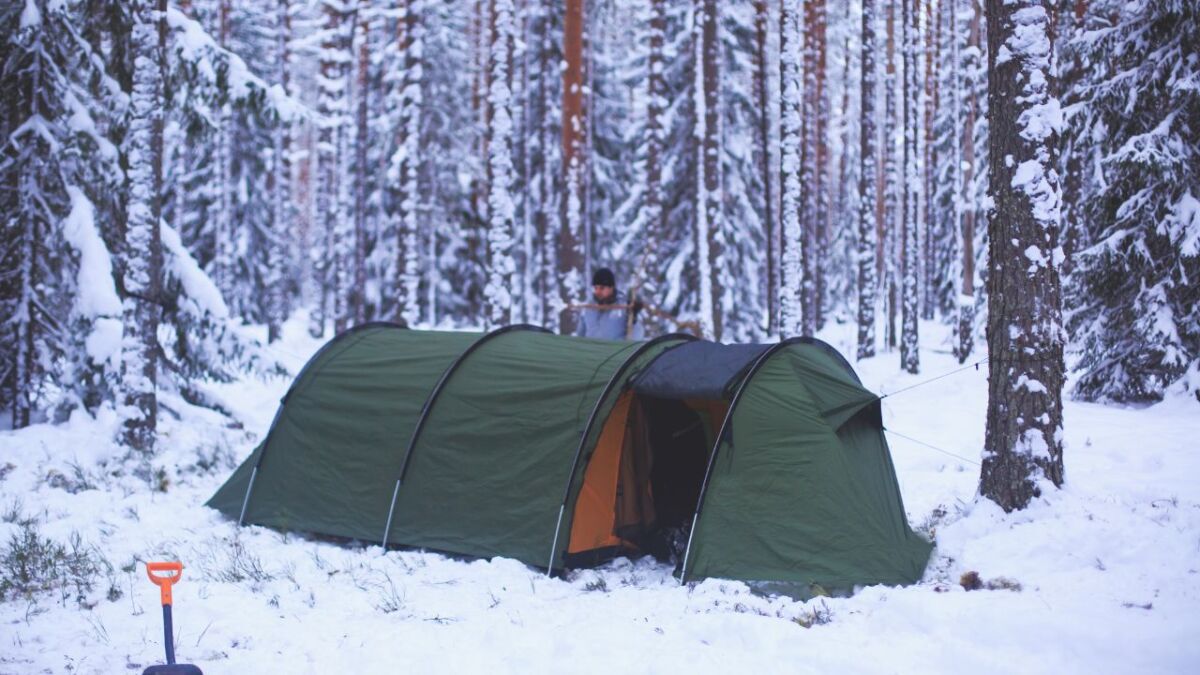
Make sure that you don't necessarily choose a position where you are snowed in within two minutes, but also avoid too open positions that offer you no protection from the wind.
Basically, snow generally does not provide a suitable surface for your tent or sleeping area.
If, however, you are skilled at it, you can of course also build a comfortable and stable igloo that protects you.
But please only do this if you know what you're doing. Otherwise, you'll waste valuable time while potentially cooling down more and more.
Also read
7 dangers of snow caves and how to avoid them (+opinion from a survival trainer) - Snow caves offer great protection against cold, wind, and weather. However, snow caves can also be dangerous. Learn how to avoid the dangers.
9. Avoid deep valleys
This tip applies in general, but exceptions are possible. In normal circumstances, more snow accumulates in deep valleys than in higher areas.
By the way, the same applies to water, and you have already been able to read something about what excessive moisture and wetness can have fatal effects.
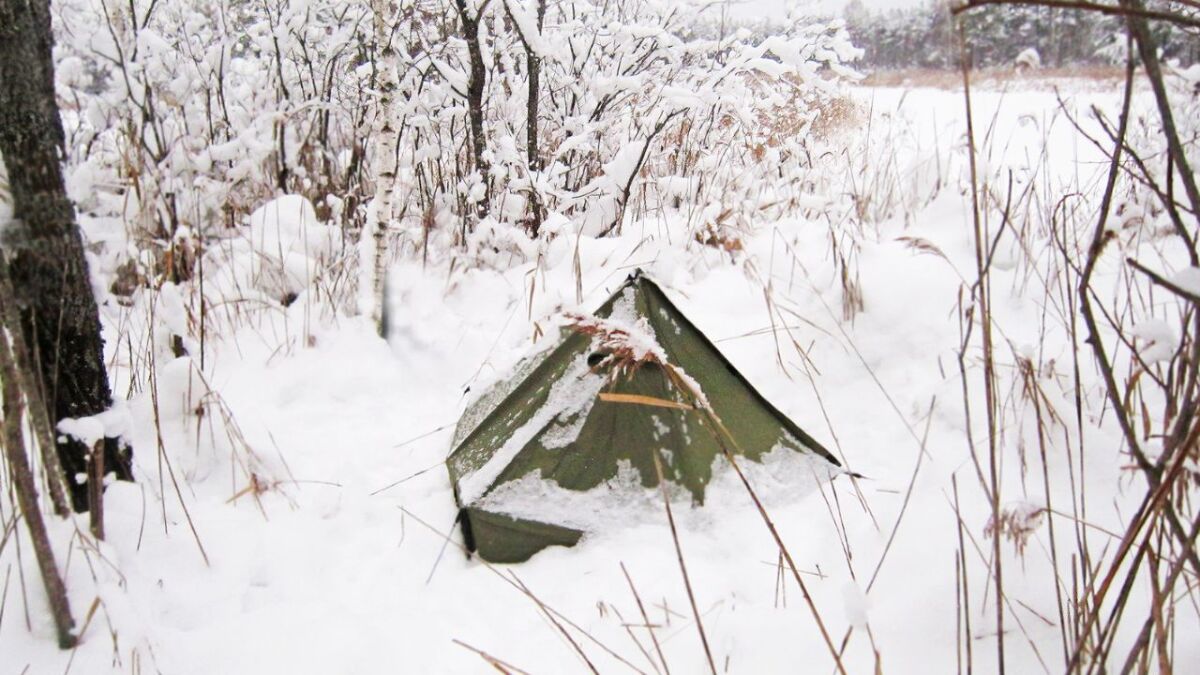
As already emphasized, there are exceptions, however. If the wind higher up is unbearable and there are no possibilities for shielding, then the valley is the lesser evil, as long as you are careful and do your best to stay dry.
In the ideal case, however, you are located a bit higher up on a hill while you have found a way to protect yourself from the icy cold wind. Take all the tips mentioned so far to heart.
10. Don't forget to eat and drink
The food is of special importance in terms of heat. If you consume food that your body needs to digest and utilize, it also produces heat at the same time.
On the other hand, your body temperature is kept stable, while at the same time you give off some heat to your surroundings - so the temperature also rises slightly in your shelter.
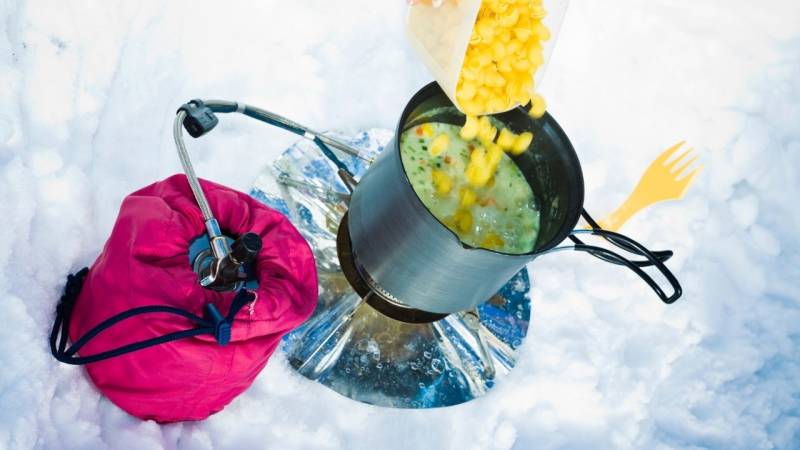
Furthermore, it is not uncommon for the general body temperature of a person to decrease when they are in a relatively strong calorie deficit, as is the case in a diet, for example.
Basically, there's nothing wrong with that, but you definitely don't want to lose body heat unnecessarily under any circumstances.
If you also don't eat enough, you will quickly become tired, move less, and sleep more.
Don't get me wrong, of course you also have to sleep at some point, but even then, the body temperature drops again a bit.
What is fundamentally not tragic does not go well at all with the circumstances in which you currently find yourself.
Moreover, you must drink regularly to avoid dehydration. But don't overdo it either, as you will otherwise have to empty yourself in short intervals.
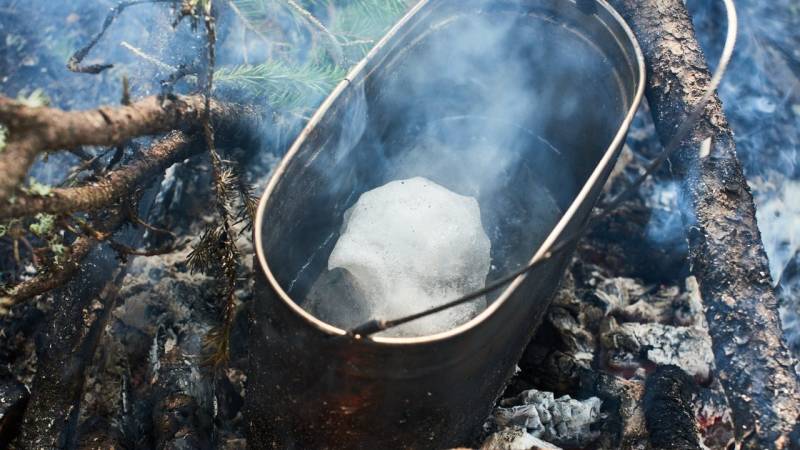
If you find yourself in the middle of a blizzard, it would be inconvenient to leave the tent or shelter. So, you will have to resort to the good old bottle or another container to do your business.
As strange as it may sound to you, keep the bottle or container used during the winter storm in your shelter.
The excretions contained therein also emit some heat, which can be useful to you.
Read also
Can you really eat snow in survival situations? - Snow is like water, but can you eat snow when you are in a survival situation? And if so, you will find out here what you need to consider.
11. Isolation, Isolation, and Isolation Again
With isolation, everything stands or falls when it comes to surviving a winter storm.
You want and should do everything imaginable to keep warmth in your body and shelter.
This means in plain language that you ideally apply the onion principle wherever possible.
Make sure your sleeping area is protected from the wind and that heat cannot easily escape. Do not place your sleeping bag directly on the ground, but on a sleeping pad.
Maybe take another blanket and pull it over the sleeping bag, then slip inside. Produced body heat stays with you, hopefully keeping the cold at bay.
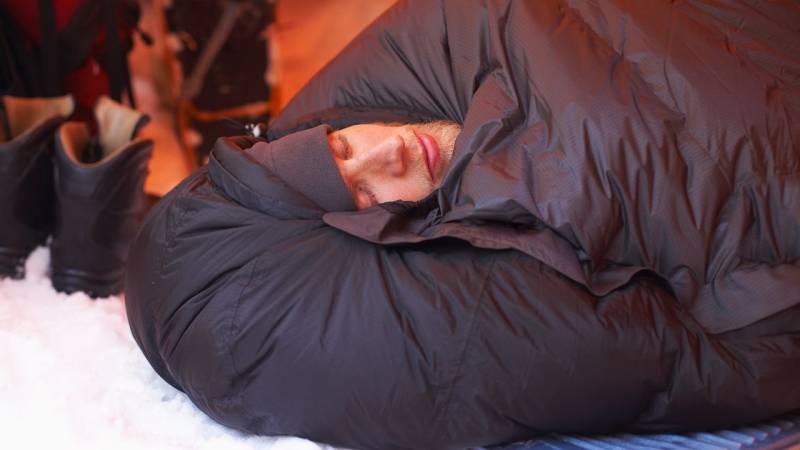
Conclusion: Everything depends on thermal insulation
Now you have received more than just a few useful pieces of information on what to do if you find yourself in a winter storm or blizzard during a camping adventure.
As everywhere, first: preparation is the best protection you can acquire without getting yourself into a precarious situation. Everything that follows is a reaction to a situation.
If you find yourself in a winter storm, you must react undoubtedly, and your reaction should always and constantly be: thermal insulation!
What may sound exaggerated in this article, especially when focusing on icy gusts of wind, is bitter reality.
Accordingly, in conclusion, here are a few thoughts that you may want to take to heart.
If you find yourself in icy cold and your body temperature is gradually dropping, you will no longer be able to withstand the stresses that you would normally handle easily.
Hypothermia, also known as hypothermia, is nothing to joke about.
In the worst case, if you are unable to provide adequate thermal insulation, your bodily functions will fail one by one over time, ultimately leading to death.
So here's a little reminder from me to you: Enjoy your camping trips, nature, your bushcraft, or survival adventure - but always and constantly think about your safety.
Never take a risk.
No adventure is worth experiencing if you don't come back home safely to proudly tell the tale and remember it.


Author of the guide
Martin Gebhardt
Hey, I'm Martin. On my blog, you will learn the basics and numerous details about living in the wild. I think survival, bushcraft and the good life in nature are the keys to happiness. Find me here on Instagram or on YouTube. You can find more about my mission on the About Me page.
Was this guide helpful?
2 people found this guide helpful.
5.00 out of 5 points (2 Ratings)
Comments (0)
This post may contain affiliate links. So if you click on the links and make a purchase, I will receive a small commission at no additional cost to you. Click here, to learn more about it.


